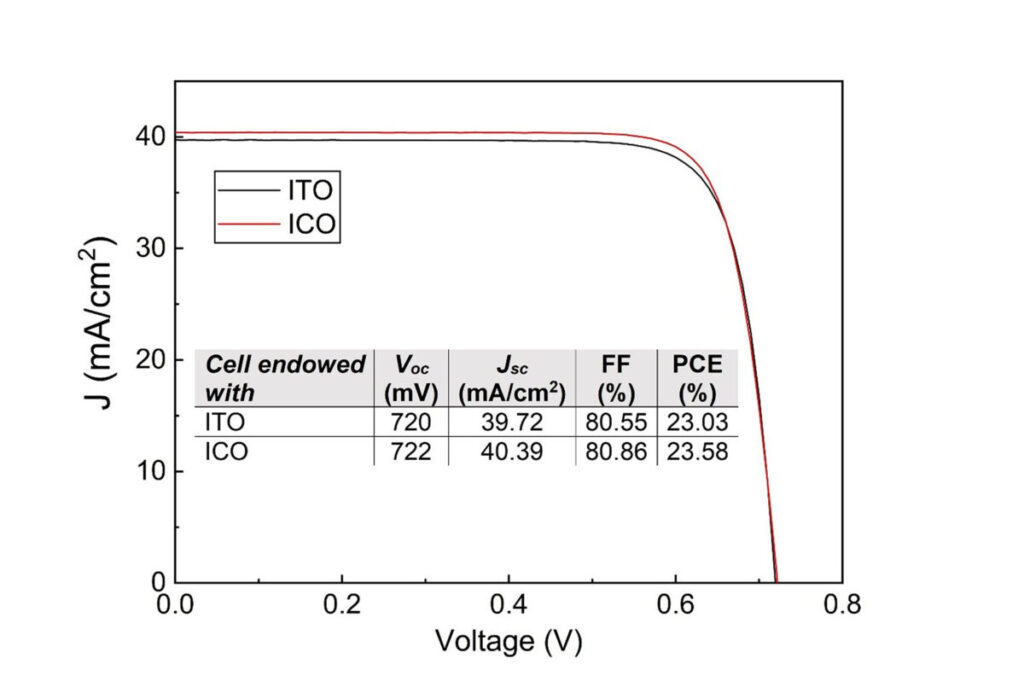Researchers at Delft University of Technology have developed new Cerium-mented indium oxides for applications in hetero junction solar cells. A transparent conductive oxide built with the new connection has made a significant increase in the efficiency of power conversion possible.
Scientists from the Delft University of Technology (TU Delft) in the Netherlands have a front-back contact silicon heterojunction (FBC-SHJ) solar cell manufactured with a transparent conductive oxide (TCO) based on cerium-reded indium oxide (ICO) with the aim of the opto-electric performance of the optoelectric performance of the opto-electric performance of the optoelectricianelectrician performance.
“To further increase the efficiency of the power conversion, the route of TCO layers with high mobility can be followed,” the main author of the research, Attract Özkoltold PV -Magazine. “We have decided to explore Cerium-doped Indium oxide films for this purpose. It is known that Longi already uses hydrogenated indium oxides (ICO) layers that have been grown through reactive plasmade position (RPD) in its world record solar cells (RFTR-friendly have the great-friendly response), the sput-friendly sparing temperature, sparing-friendly-friendly sparing temperature,, spare-friendly-friendly sparing temperature,, sparing-friendly-friendly sparing temperature),, spare-friendly-friendly sparing temperature), sputing-friendly sparing temperature), sputing-friendly-friendly sparing temperature), sput-friendly-friendly-friendly response. Laborations are in the most of the laboratories, but in most of the laboratories it is the majority of literature.
The researchers explained that ICO layers are particularly attractive for the production of solar cells because of their opto-electric properties and the deposition of room temperature on indium tinoxide (ITO) counterparts. They used 35-NM thick ICO films sputtered on Corning Eagle XG Glass substrates at room temperature.
“As the first step, we have tailored process parameters to optimize ICO layers in terms of mobility, carrier concentration, resistance and transmission,” said Özkol. “We have achieved a indoor mobility of 44.22 cm²/versus, which is 56% higher than our baseline -ital, and resistance as low as 8.56 × 10 Ω · cm. The second step was of course applying this layer to the solar cells.”
The research team built 2 × 2 cm2 Size cells on fully passivated 4-inch round waffles.
Tested under standard lighting conditions, the device achieved a power conversion efficiency of 23.58%, an open circuit voltage of 722 MV, a short-circuit current of 40.39 mA/cm2 and a filling factor of 80.86%. A reference solar cell built with an ITO TCO achieved an efficiency of 23.03%, an open circuit voltage of 720 mv, a short -circuit current of 39.72 mA/cm2 and a filling factor of 80.55%.
“The opto-electric improvement of our ICO films with regard to the ITO reference layer was reflected at the device level, in particular for the short-circuit current, with an improvement of 0.67 mA/cm2 For ICO Layers, ” Özkol said. “To conclude, we have not only demonstrated the potential of ICO as a powerful ITO alternative, but also open new doors for cost-effective, scalable and low temperature TCO manufacturing for advanced PV technologies.”
The new cell concept was presented in the study “Optimization and integration of room temperature RF Sputtered ICO as TCO layers in powerful SHJ sun cells“Published in Solar energy materials and solar cells.
In April, other TU Delft researchers presented a rear junction Silicon Heterojunction Solar cell with a localized front carrier-selective Passivating contact that only covers the area with the metal schedule.
This content is protected by copyright and may not be reused. If you want to work with us and reuse part of our content, please contact: editors@pv-magazine.com.

